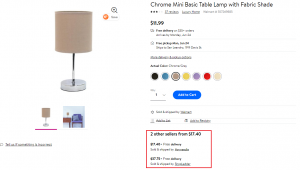The most successful brands keep the customer at the center when expanding their digital presence.
“We’ve all heard that adage, ‘there’s danger in not moving your business at the speed at which it should be moving,’” said Matthew Crocker, Director of Marketing for CX software company Table, at MarTech recently. “Right now, customers are becoming digital first, and let’s be honest, they’re becoming digital everywhere.”
Crocker was speaking about the historic push that brick-and-mortar businesses experienced to go digital due to pandemic lockdowns and social distancing. But there are broader implications for every business. If customers want “digital everywhere,” it’s up to marketers to pull together the digital experience from the many fragmented channels that customers use.
“Digital is that huge push, that huge focus that the customer has that they want to be served up their content in that way, in that manner,” Crocker said. “Even though we’ve talked about it for a long time, there needs to be a seamless, easy and very unified way that businesses can move from the square footage (in a store) to the screen…and maybe back and forth a little bit.”
Regardless of whether your business began as a physical store, or as an e-commerce play, many customers would like both. For instance, look at how e-commerce home and bed maker Resident moved quickly to establishing itself at brick-and-mortar retail chains. Now that customers demand both, it’s the digital connection that brings experiences together, and there’s more pressure for marketers to make it seamless.
Avoid shortcuts
Seamless doesn’t mean reducing experience to a single channel so there isn’t anything to stitch together. Yet Crocker finds this to be a common method used by marketers, at least at the early stages of transformation.
The inclination might be to use a tried-and-true tool like a chatbot and simply assume that no other digital channels are necessary, he said.
“A lot of companies are struggling now with the plug-and-play solutions to keep their businesses relevant,” Crocker said. “The easy solution is to follow these methods that bend customers to predictable funnels…but it sacrifices experience for efficiency. It’s a common problem that a lot of traditional brick-and-mortar retailers fall into.”
He added that putting the customer first helps improve the transition from brick-and-mortar to digital channels.
Expanding digital communications
When companies grow their digital presence, they are immediately met with the challenge to avoid being repetitive. They can’t simply build a homepage and then use those same messages and graphics on all other digital channels.
“The business, on the one hand, has this issue that they need to reach as many people as they can, and they have thousands, if not tens of millions, of customers they need to take care of,” said Table CEO Cristian Petschen. “But at the same time they need to provide an experience for them that feels natural.”
Using this strategy of keeping the customer first and providing a natural experience means that if a chatbot is being used, it should have the flexibility to ask the right questions and to lead a customer to a live service professional, if necessary, Petschen said.
“We do have this automated experience, but it needs to be semi-customized, and it needs to be customer-driven,” said Crocker. “[Customers] shouldn’t have things forced on them, [they] should have the ability to talk to a live agent. That dynamic is so key to dynamic [experience] versus repetition.”
Persistence pays off
Customers who are served the same content for different use cases will be turned off by repetition. Conversely, good seamless CX should also be persistent in leading customers through the right experience.
“Whatever you are interfacing with, it needs to have some persistence to it,” Crocker said. “It needs to remember who you are. It needs to remember what your problem is, and that’s really important when you’re talking about these interactions — is it persistent, does it remember?”
“When somebody has a relationship with someone and they have a conversation it needs to be personal, it needs to be dynamic, it needs to flow, it needs to have a thread to the conversation,” said Petschen. “If you don’t know who they are or you don’t understand the previous conversations that you had, you’re not going to have that relationship.”
Having data on past purchases and previous customer service issues at the ready will make for better engagement, enabling the customized experience to trigger or nurture customers. This, along with the right content assets, can build rich media experiences, not just when purchasing, but throughout the customer journey.
“Everything in a business can be a commodity with the exception of customer service and the way you treat your customers,” said Crocker. “That’s the one thing that is extremely hard for other companies to copy.”
Having the balance between repetition and dynamic persistence, which might be easier in an exclusively brick-and-mortar environment between sales reps and customers sharing the same physical space, becomes a key goal for marketers when transitioning, or scaling, the digital CX.
Seamless journeys
“When retailers talk about a customer journey, it’s usually shown as a line on a screen,” said Crocker. “I hate that methodology because the customer journey is actually more like a circle. [Customers] should keep coming back around and being exposed to your brand over and over, and to what the brand can offer the individual.”
“Different brands have different personas and personalities, and there’s certain goals they’re trying to achieve,” said Petschen. “But the customer actually moves across different channels …. They’re not really seeing themselves as being part of a stage where, for instance, they’re being tracked and they’re in the retention stage, or in the ‘make the customer an advocate’ stage — they’re just going about their life.”
Plus, the order of stages isn’t predictable for the customer, so the business needs to seed each stage across different channels for the customer to be able to make sense of the experience, Petschen said.
“Tap what their needs are, then tie it together so that you know where they are along this journey,” he said.
The customer’s movements can be unpredictable, so it’s important to have triggers ready to guide the customer without being repetitive. Understanding the customer’s perspective also means adopting a mobile strategy since the phone is the single screen most consumers are carrying around with them, Crocker said.
“If the digital experience can’t recognize who the customer is, where they are and what they need, what they purchased and what services they received, the relationship is going to be anything but natural,” said Petschen.
When the experience addresses these important markers in a customer relationship, only then can customers become advocates for the brand.
The post How to build seamless experiences for ‘digital everywhere’ customers appeared first on MarTech.
MarTech(46)
Report Post







